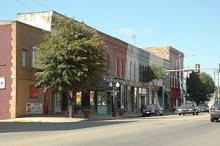Community Built Network Saves Local Jobs in Princeton, Illinois
Kudos to Richard Downey, Village Administrator for the Village of Kronenwetter in Wisconsin. Mr. Downey reminded us that we have yet to write about the fiber network in Princeton, Illinois. While we have noted Princeton in our list of economic development successes, we haven't delved into the network that serves the city, the schools, and the business community.
Princeton is home to about 7,500 people and is located in the north central region of the state in Bureau County. They have their own electric, water, and wastewater utilities and began offering broadband connectivity in late 2003. We spoke with Jason Bird, Superintendent of Princeton Electric Department, who shared the network's story with us.
In 2003, the city’s largest electric and water consumer was also the largest employer. At the time, incumbents served the community with T1 connections. The manufacturing company moved to Mexico, taking 450 jobs with it. The community was stunned.
Approximately 6 months later, Ingersoll Rand, the community's second largest employer with about 300 jobs, also considered moving away from Princeton. While lack of needed broadband was not the only reason, the Ingersoll Rand CEO let community leaders know that it was one of the influential factors. The company liked being in Princeton, and the city would have been on the top of the location list if not for the sad state of connectivity. At the time, the only commercial option was unreliable T1 connections for $1,500 - $2,000 per month. If Ingersoll Rand moved, the community would experience job losses equal to 10% of the population. Community leaders needed to act and do it quickly.
To retain Ingersoll Rand, the City Council decided unanimously to go into the telecommunications industry. They issued an RFP and encouraged incumbents AT&T and Comcast to bid; neither were interested. (Interestingly, once Princeton let it be known that they were going to build the network without them, there were some local upgrades from both companies.)




